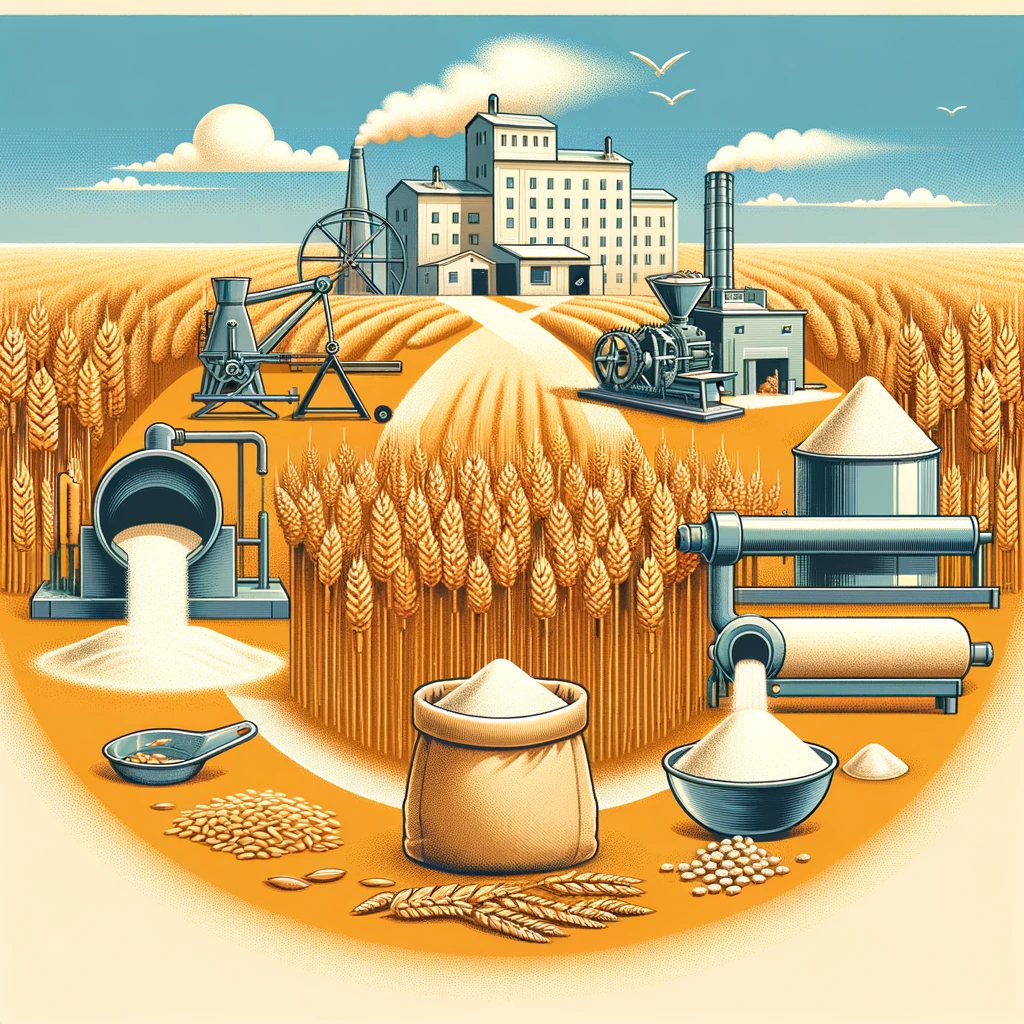
Understanding how flour is made provides insight into one of the most fundamental ingredients in our kitchens. This process, which has been refined over centuries, transforms wheat into the fine powder we use in countless recipes. This article delves into the step-by-step process of how flour is made, highlighting the meticulous care taken at each stage to ensure the highest quality product.
Indice
The Harvesting of Wheat
The journey of how flour is made begins with the harvesting of wheat, which is grown in fields across the world. Wheat is typically harvested in the late spring or early summer, depending on the climate and the wheat variety. Once the wheat is deemed ready, it’s harvested using large combines that cut, thresh, and winnow the wheat, separating the grain from the chaff.
Cleaning and Conditioning
After harvesting, the wheat grains undergo a rigorous cleaning process. This step is crucial for removing impurities, such as dirt, stones, and other unwanted materials that may have been gathered during harvesting. The grains are then conditioned by adding moisture, a process that prepares the wheat for milling by softening the outer bran layer. Conditioning ensures that the bran can be separated more easily from the germ and endosperm during the milling process.
The Milling Process
The core of how flour is made lies in the milling process. Modern milling involves grinding the grains between steel rollers or stones. The goal is to separate the wheat kernel into its three components: the bran (the outer layer), the germ (the embryo), and the endosperm (the bulk of the kernel). The endosperm is what is ground into flour, while the bran and germ are either included in whole wheat flours or removed in the case of white flour.
During milling, the endosperm passes through a series of rollers that gradually reduce it to a fine powder. This process is carefully controlled to achieve the desired texture and quality of the flour. The resulting product is then sifted to ensure uniformity, with finer flours being sifted through tighter screens.
Enrichment and Fortification
An important aspect of how flour is made today involves enrichment and fortification, especially in many parts of the world where flour is a key dietary staple. Enrichment involves adding back certain vitamins and minerals, such as B vitamins and iron, that are lost during the milling process. Fortification, on the other hand, may add nutrients that were not originally present in significant amounts, like folic acid, to prevent nutrient deficiency conditions in the population.
Packaging and Distribution
Once the flour has been milled, enriched, and fortified, it is packaged for distribution. The packaging process involves careful consideration of moisture content and air exposure to ensure that the flour remains fresh during transport and storage. Flour is typically packaged in paper or plastic bags and is available in various grades and types, catering to different baking needs.
The Types of Flour
Understanding how flour is made also involves recognizing the different types of flour produced through varying degrees of processing and blending. These include all-purpose flour, bread flour, cake flour, whole wheat flour, and specialty flours like rye and buckwheat. Each type of flour has specific properties and uses in baking, determined by the protein content and the presence or absence of the wheat kernel’s components.
Sustainability and Innovation
The process of how flour is made is continuously evolving, with a growing emphasis on sustainability and innovation. Farmers and millers are adopting practices that reduce water usage, enhance soil health, and minimize waste. Additionally, there’s an increasing focus on producing gluten-free and alternative flours, catering to diverse dietary needs and preferences.
Conclusion
The process of how flour is made is a testament to human ingenuity and our relationship with food. From the fields where wheat is harvested to the mills where it is transformed into flour, every step is imbued with a commitment to quality. As we explore how flour is made, we gain a deeper appreciation for this staple ingredient that plays a crucial role in our culinary traditions and daily lives.
Understanding how flour is made not only enriches our knowledge of the food we eat but also highlights the importance of sustainable and responsible production practices. As consumers, we can support these efforts by choosing products that align with these values, ensuring that the journey from field to table reflects our commitment to the health of our planet and its inhabitants.
Discover the Pure Essence of Baking with èViva’s Natural Flours
Embark on a culinary journey with èViva, where tradition meets purity in every grain. Our natural flours, free from any additives and preserving the wheat germ alive, offer you the essence of true flavor and unmatched health benefits. With èViva, you’re not just baking; you’re crafting memories with the most wholesome ingredients provided by nature.
Whether you’re a professional chef or a home baker, èViva’s natural flours are designed to elevate your baking creations, ensuring that every bite is a testament to quality and care. Our commitment to maintaining the wheat germ alive in our flours means you get more nutrients, more flavor, and a more vibrant baking experience.
Join the èViva family today and transform your baking with our range of completely natural flours.
Visit our website to explore our products and start creating with the finest flours nature can offer.
Your journey towards healthier, more delicious baked goods starts with a single scoop of èViva flour.
